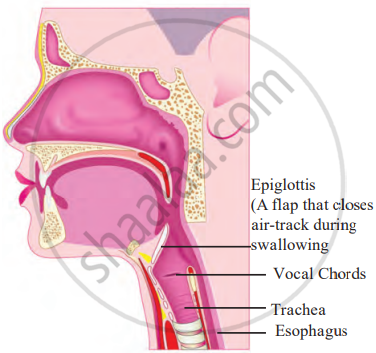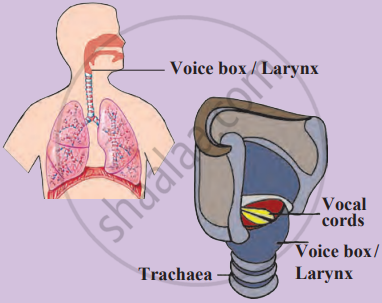Topics
Crop Production and Management
- Crop and Its Types
- The Green Revolution
- Soil Formation and Preparation for Agriculture
- Agricultural Implements
- Fertilizers
- Manuring (Biomanuring)
- Fertilizers
- Methods to Replenish Nutrients in Your Soil
- Improved methods of agriculture
- Food Security
- Weeding
- Harvesting of Crops
- Storage of Food Grains
- Animal Products used as Food
Microorganisms: Friend and Foe
Coal and Petroleum
- Conventional energy resources or non-renewable energy resources
- Carbon: A Versatile Element
- Special Features of Carbon
- Non-crystalline/Amorphous Forms: Coal
- Extraction of Coal
- Non-crystalline/Amorphous Forms: Coke
- Petroleum
- Refining of Crude Petroleum
- Natural Gas
- Some Natural Resources Are Limited
Synthetic Fibres and Plastics
- Fibre
- Fabrics
- Man-made Fibre: Synthetic Fibres
- Rayon
- Nylon
- Dacron, Terylene, Terene
- Man-made Fibre: Plastics
- Biodegradable Plastics
- Harmful Effects of Plastics
- Recycling of Plastic
Combustion and Flame
- Combustion
- Precautions and Safety Measures
- Types of Combustion
- Flame
- Fuel
- Types of Fuel
- Fuel Efficiency
Materials: Metals and Non-metals
Conservation of Plants and Animals
- Deforestation and Its Causes
- Consequences of Deforestation
- Conservation of Forest
- Conservation of Wildlife
- Biosphere Reserve
- Flora and Fauna of Forest Ecosystem
- Endemic Species
- Wildlife Sanctuary
- National Park
- Red Data Book
- Migration
- Recycling of Paper
- Reforestation
Reproduction in Animal
- Reproduction
- Reproduction
- Mode of Reproduction in Animal
- Sexual Reproduction in Animals
- The Male Reproductive System
- The Female Reproductive System
- Gametogenesis
- Fertilization in Human
- Embryonic Development in Human
- Embryo Formation in Viviparous and Oviparous Animals - Young Ones to Adults
- Asexual Reproduction in Animal
Reaching the Age of Adolescence
- Adolescence and Puberty
- Changes at Puberty
- Secondary Sex Characteristics
- Role of Hormones in Initiating Reproductive Function
- Reproductive Phase of Life in Humans
- Sex Determination
- Hormones Other than Sex Hormones
- Role of Hormones in Completing the Life History of Insects and Frogs
- Reproductive Health
- Nutritional Needs of Adolescents
- Personal Hygiene for Adolescence
Cell - Structure and Functions
- Cell: Structural and Functional Unit of Life
- The Invention of the Microscope and the Discovery of Cell
- Organisms Show Variety in Cell Number, Shape and Size
- Structure of the Cell
- Plasma Membrane
- Semi-permeable Membrane (Cell Membrane)
- Cell Wall - “Supporter and Protector”
- Nucleus - “Brain” of the Cell
- Cytoplasm - “Area of Movement”
- Plastids
- Non-living Substances Or Cell Inclusion
- Prokaryotic and Eukaryotic Cell
- Plant Cell and Animal Cell
Force and Pressure
- Force
- Force - Push or Pull
- Forces Are Due to an Interaction
- Exploring Forces
- A Force Can Change the State of Motion
- Force Can Change the Shape of an Object
- Effect of Force
- Types of Force: Contact Force
- Types of Force: Non-Contact Force
- Thrust and Pressure
- Pressure of liquid
- Factors Affecting Liquid Pressure
- Atmospheric Pressure
Friction
- Force of Friction
- Factors Affecting Friction
- Friction - A Necessary Evil
- Effects of Friction
- Increasing and Reducing Friction
- Kinds of Friction
- Fluid Friction
Sound
- Sound
- Production of Sound
- Sound and Music
- Sound Produced by Humans
- Propagation of Sound
- Sound Need a Medium to Travel
- Human Ear
- Characteristics of a Sound Wave
- Oscillator, Oscillation and Oscillatory Motion
- Properties of Sounds
- Loudness and Intensity
- Pitch (or shrillness) and frequency
- Audibility and Range
- Noise and Music
- Noise Pollution
Chemical Effects of Electric Current
- Conductor of Electricity: Liquid
- Electricity
- Chemical Effects of Electric Current
- Conductors and Insulators
Some Natural Phenomena
- Lightning and Lightning Safety
- Force of Friction
- Electric Charge
- Types of Charges and Their Interaction
- Transfer of Charges
- Electroscope
- Lightning and Lightning Safety
- Earthquake
- Protection Against Earthquakes
Light
- Light
- Reflection of Light
- Terms Used in Reflection of Light
- Law of Reflection of Light
- Types of Reflection
- Multiple Reflections
- Prism
- Dispersion of Light Through Prism and Formation of Spectrum
- Human Eye
- Care of the Eyes
- Visual Impairment and Braille System
Star and Solar System
Pollution of Air and Water
- Pollution and Its Types
- Air Pollution and Its Causes
- Case Study: The Taj Mahal
- Green House Effect
- Preventive Measures of Green House Effect
- Global Warming
- Preventive Measures of Global Warming
- Prevention of Air Pollution
- Water Pollution and Its Causes
- Case Study: Ganga Pollution and Ganga Action Plan
- Potable Water
- Purification of Water
- Prevention of Water Pollution
Sound Produced by Humans:
Acoustics is the science that deals with sound. It covers everything about sound, including how it is made, travels, and its effects on environments and objects.
- The intensity or loudness of sound is measured in units called decibels (dB). The higher the decibel, the louder the sound.
- Inside the human throat, there is a structure known as the larynx, commonly referred to as the "voice box."
- The larynx contains vocal cords, which are like two small, stretched bands.
- Two vocal cords are stretched across the voice box or larynx in such a way that they leave a narrow slit between them for the passage of air. When the lungs force air through this slit, the vocal cords vibrate, producing sound.
- Muscles attached to the vocal cords can adjust them to be tight or loose. When the vocal cords are tight and thin, the type or quality of voice changes.
- Tighter vocal cords vibrate faster and produce a higher-pitched sound. Looser vocal cords vibrate slower and make a deeper sound.
- Vocal cords are 20 cm in length in males, about 15 cm in females, and even smaller in children. Therefore, the voices of males, females and children are different.

Larynx in human

If you would like to contribute notes or other learning material, please submit them using the button below.
